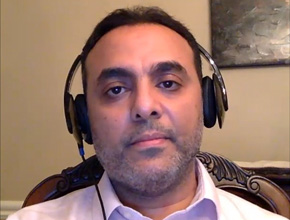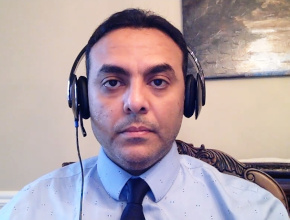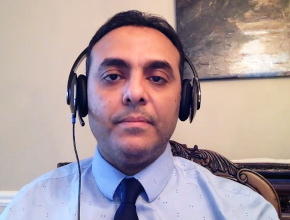Dr Mark Loeb, professor in the Department of Pathology and Molecular Medicine and Michael G. DeGroote Chair in Infectious Diseases at McMaster University, is interviewed by Dr Roman Jaeschke about the essential terminology for discussing the current COVID-19 situation (outbreak vs epidemic, containment vs mitigation) and draws parallels with influenza pandemics from the past.
For previous McMaster Perspective episodes with Dr Mark Loeb discussing COVID-19, click here and here.
Roman Jaeschke, MD, MSc: Good morning. Welcome to another edition of McMaster Perspective. We are talking about coronavirus disease 2019 (COVID-19) again. I would like to use the expertise of our guest, Doctor Mark Loeb, and talk in general terms about the nomenclature that we are using.
Doctor Loeb, we hear about all kinds of labels, including epidemics and pandemics. I wonder if we could start here and then have a few words about containment versus mitigation. The floor is yours.
Mark Loeb, MD, MSc: There are different terminologies that are being used with respect to the coronavirus outbreak. There’s outbreak, there’s epidemic, and there’s pandemic, so it’s important to understand what the differences are.
An outbreak is something that happens when there is an increase above baseline. For example, one case of anthrax would be considered an outbreak. The difference between an outbreak and an epidemic is that an epidemic is more widespread. So an outbreak will be localized, for example, in a nursing home or in a hospital, whereas an epidemic is more widespread, and often there’s community spread, which is localized.
And then there’s a pandemic. The definition is not very precise, but the working definition is community spread all over the globe, in multiple countries. It is interesting that, to a certain extent, this is what’s happening now with COVID-19. There are epidemics and there’s community spread in multiple countries. The World Health Organization (WHO) is still hesitant to call it a pandemic and it’s interesting why. Theoretically, they could go ahead and call it a pandemic right now, because there’s community spread in multiple countries. The hesitation, I think, is one of messaging. If they go ahead and call it a pandemic, there’s concern that containment efforts might be diminished, while what’s happening now is that most countries are carefully counting the cases and following contacts. So it’s really a search-and-destroy strategy to stop the virus from spreading at all.
Traditionally a pandemic means that the community spread is so wide that it’s almost [impossible] to stop, and you’re left with mitigation strategies. Mitigation strategies are strategies like school closures or stopping mass gatherings of people. It is sometimes acknowledged that one cannot stop the virus from spreading but one can mitigate the complications.
It’s almost analogous to a clinical situation where, let’s say, there’s no clinical cure for an individual patient, but you could do something to reduce the complications now that the patient has the disease. The analogy is very similar. I think part of the issue is that one can still call this a pandemic and it doesn’t mean that we should stop trying to contain the virus.
In other words, what’s being done in many countries right now is correct in my own opinion, but I’m less optimistic about the outcome. I think it’ll reduce the spread but I don’t think this virus can be contained. It’s global, it’s spreading into more and more countries, and I think what we’ll see eventually is more community spread. I also think that eventually the WHO will say that this is a pandemic.
Roman Jaeschke: Another question. You have major experience in handling epidemics or pandemics of influenza. Could you make some predictions on the basis of this in terms of how wide this exposure—or infection, or symptomatic infections—may become, understanding that we are talking about educated guesses here?
Mark Loeb: We can compare this to influenza. Influenza is very difficult to contain, but not everybody gets infected, even when there’s a pandemic of influenza. Generally speaking, even in the case of seasonal influenza the attack rates will go up to about 10%. By attack rates I mean that 10% is people who have symptoms and are tested by polymerase chain reaction (PCR), so [the diagnosis is] laboratory-confirmed. When you do serology, though, looking at flu, the numbers get higher. Sometimes there will be 20% to 25% of people infected.
The real question is, what is it going to look like with COVID-19? Serology tests are just being developed now, so there are no seroepidemiologic studies that have been published yet. What those figures will be is unclear. I don’t think it’s going to be as high as 25%; maybe 15% in the population? Something like that. Even if this virus spreads in the community, not everybody will be infected, but there’ll be enough infection to cause substantial morbidity and mortality in those at-risk groups.
 English
English
 Español
Español
 українська
українська











